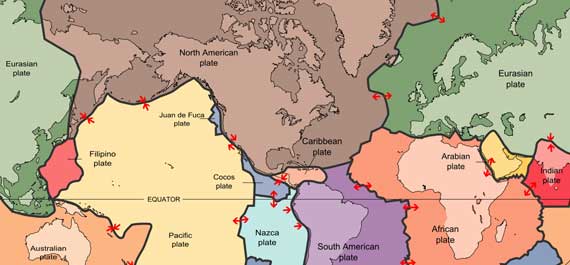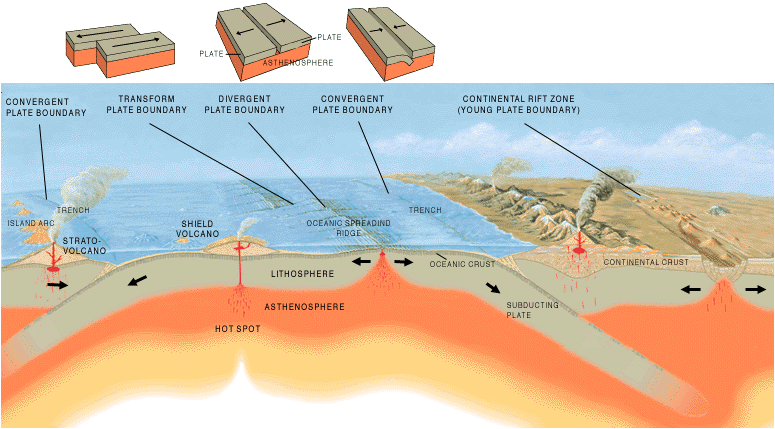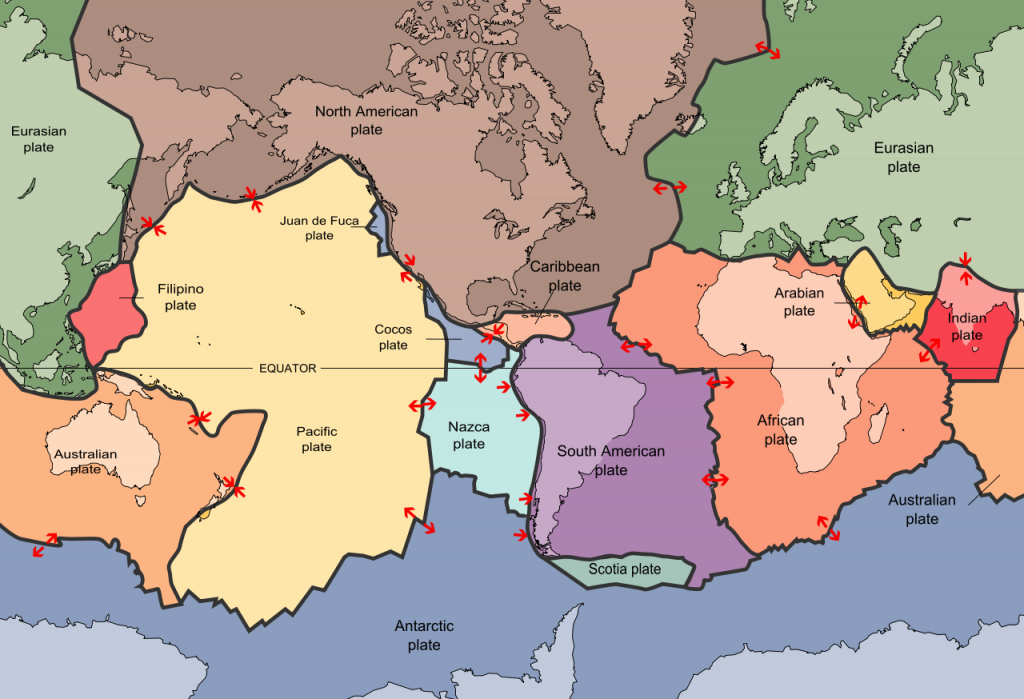Tectonic Plates are sections of a planet’s lithosphere (the crust and mantle of a planet) that your world continent will then sit upon. They are what separate the land from the molten lava below. Because the lava flows and moves under the surface due to different temperatures in the earth core they slowly move these plates which is what is believed to cause continental drift.
3 Types of Tectonic Movement
One of the key things to remember about tectonic plates is that they move, but very slowly (up to 3.9 inch per year) and only move in one of the 3 ways as shown by the diagram below:
These types of movement will become more important to you later on as you move into drawing other parts of your world map. However I will briefly run over what happens with each movement.
1 Side to Side
The movement of two plates running next to each other causes earthquakes
2 Moving Away
These plates will cause a continental rift (as shown on the far right of the diagram above)
3 Moving Towards
Plates that move towards each other causes mountain ranges to spring up and quite often volcanic activity.
The movement of tectonic plates will be dealt with in more detail in future articles as you build up the features of your world map.
The Tectonic Plates of Our World
As an example of the size of tectonic plates and the way they cross over continents I’ve included a map of the Earth with the tectonic plates overlaid in different colours. Also this map details the direction a plate is moving from those plates around it. This way you can see a real world example of how plates effect the geography of a continent.
Adding Tectonic Plates To Your World Map
For this part of the tutorial I’ll be using the island that was created in the “How To Draw Land” article. I’ve also added a second larger island to provide more scope for the world that is being built.
Note: notice how I have mimicked part of the shape of the first island in the second island so it looks like they could have once been joined
Then all you need to do is very simply divided the map up into a number of large plates. The map below has about 8 individual plates.
The final thing to do is to decide which direction your tectonic plates are moving against each other. Don’t worry if you have a plate who’s edges are all moving in different directions. As you can see from the example below and from the map of the Earth’s tectonics, sometimes a plate grows, shrinks or transforms by having it’s edges move in different directions to each other.
I’ve used red ink to indicate the plate directions but you can use what ever colour you prefer.
This map is going to have an interesting point of tectonic movement around the center of the big island. I look forward to fleshing out this area and learning more about what lives there. Do you have any interesting points where your plates meet?




